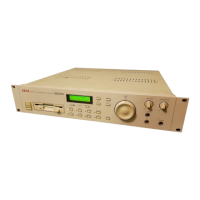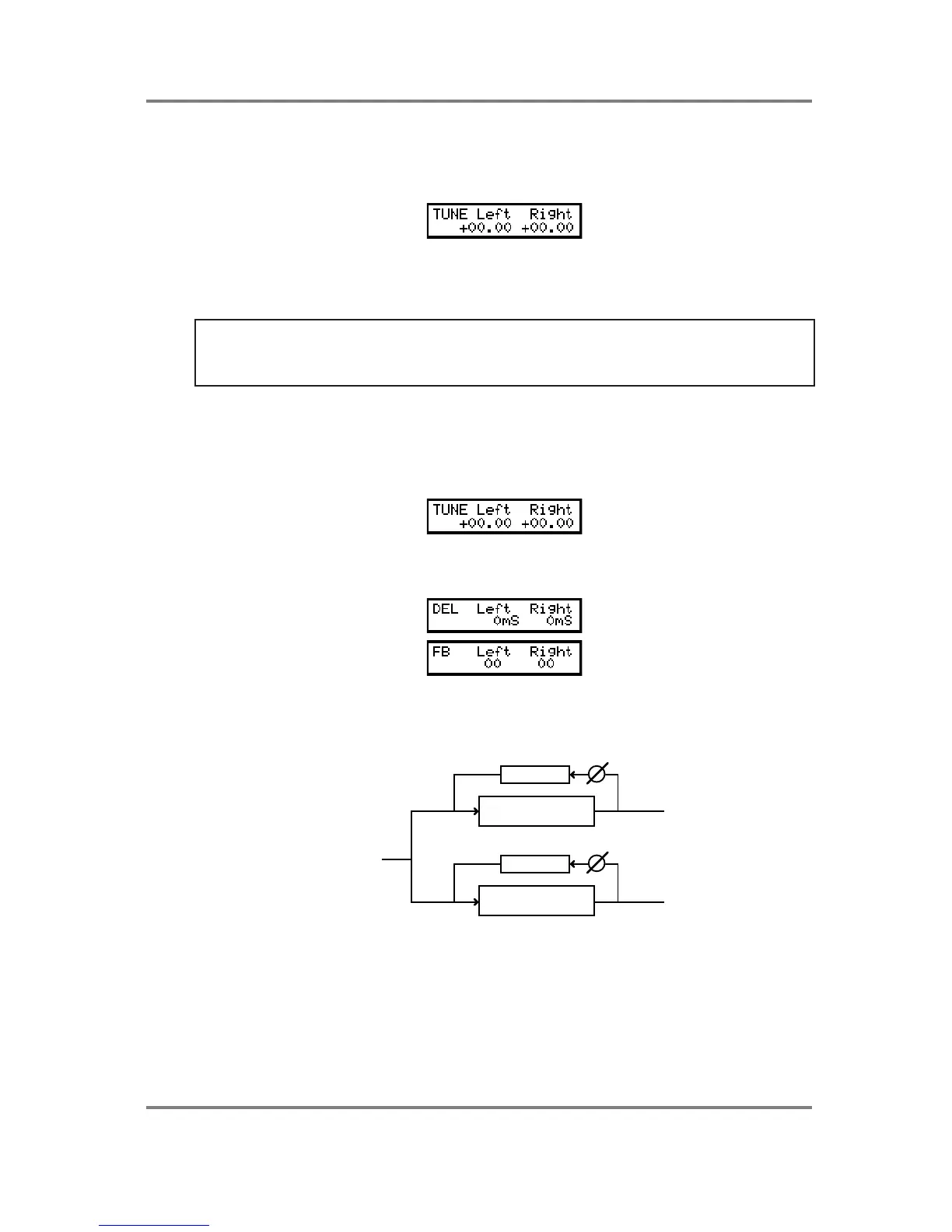EFFECTS EDIT
Page 178 S2000 Operator’s Manual - Version 1.30
STEREO PITCH SHIFT EFFECTS
If you selected PITCH SHIFT in the MOD FUNCTION page, the next page down will look like
this:
The pitch shifter allows you to set an interval for left and right. More often than not, a small
amount of detune is set here (i.e. LEFT = -00.05/RIGHT = +00.05) but you can also set these
parameters to specific intervals such as a fifth (+07.00) or an octave (+12.00) or whatever.
NOTE: As with all but the most expensive pitch shifters, there is a small delay in the pitch
shifted sound. This can be used to enhance an ensemble effect, however. Also, extreme
pitch shifts will exhibit some ‘wobbly’ artefacts. In this case, mix the level of the pitch shifted
signal back a bit.
The tuning parameters for the left and right channels are selected using F1 and F2 as cursor
keys and adjusting the pitch shift with the DATA wheel.
If you select PITCH+FBK (pitch shift plus feedback) in the MOD FUNCTION page, you will see
this screen next.
This is exactly the same as before and you may set the pitch shift interval as described above.
However, in the PITCH SHIFT+FB selection, you also have access to the following parameters:
The DEL (delay) left/right parameters allow you to set a delay time for the feedback loop. This
effects selection looks like this as a block diagram:
SHIFT LEFT
SHIFT RIGHT
DELAY L
DELAY R
Audio in
FBK L
FBK R
The signal from the pitch shifter is fed back into itself via a delay time. If you can imagine it - the
sound goes through the pitch shifter and, after a delay, that pitch shifted sound is fed back into
the pitch shifter where it is further pitch shifted. After a delay, it is fed back again after the delay
and shifted again. The amount of feedback and the delay time for each channel is separately
variable and this gives rise to all sorts of weird and wonderful arpeggio effects.

